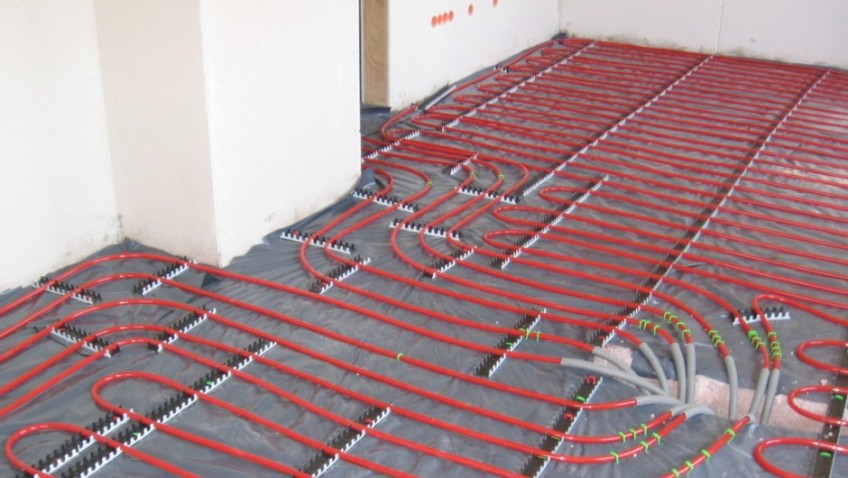A modern wave of underfloor heating (UFH) has swept under the floors of thousands of energy efficient homes across the UK. Having a decent central heating system is of the utmost importance, for home buyers and sellers alike, if you want a warm house. According to the Nationwide Building Society, 9% is bumped off the value of a property without a central heating system which proves just how essential it is that each home benefits from one. Nowadays, many home owners are choosing to opt for an underfloor heating system which is both energy and cost efficient.
What is Underfloor Heating?
UFH is used to replace the traditional job of radiators. It does so by emitting heat from the floor, working as a low surface radiator of sorts. The surrounding air of the room will determine the temperature of the floor and once this rises above the air temperature, heat is radiated evenly across the entire surface area of the floor. UFH takes up less space than radiators, meaning there is more room for furniture and other amenities. Wireless thermostats from The Underfloor Heating Store are the most convenient of their kind when it comes to temperature control because they suit all types of installation. UFH is extremely efficient and disperses no cold spots throughout the room with which it has been installed, meaning there are far less draughts present.
Types of UFH Systems
There are two types of underfloor heating systems, hot-water (wet) systems and electric mat (wire) systems. Wet systems use hot water which is pumped through plastic pipes that run underneath the floor. The warm water is from the central heating system and this method of UFH is viewed as being the most cost efficient approach as it is cheaper to run than wire systems.
The electric mat option is cheaper to install than wet systems, especially in the smaller rooms of the house such as the bathroom. It works by using cables fixed into a roll or by connecting these cables to weave mesh mats. These are then spread out underneath the floor and linked to the mains power supply and the thermostat.
Appropriate Flooring
Fortunately there are many types of flooring that can use UFH such as stone, carpet, slate, terracotta, and ceramic. Timber floors are a little more complicated and it is advised that you seek professional advice from the flooring supplier and heating installer first to make sure that your timber flooring is eligible for the use of UFH. The same goes with laminate and vinyl flooring so keep this in mind before committing to anything.
Installation
Installing UFH is quite simple and as long as you have the correct insulation installed beneath the UFH system then the rest shouldn’t be too much trouble. Many people choose to call in the professionals though who will install your system in no time. Unfortunately, British homes are one of the least energy efficient in the whole of Europe. According to Independent, British homes are responsible for 27 per cent of the UK’s total carbon emissions. UFH is one huge step towards decreasing this percentage which is why it has become an increasingly popular source of heat for our homes over recent years.





